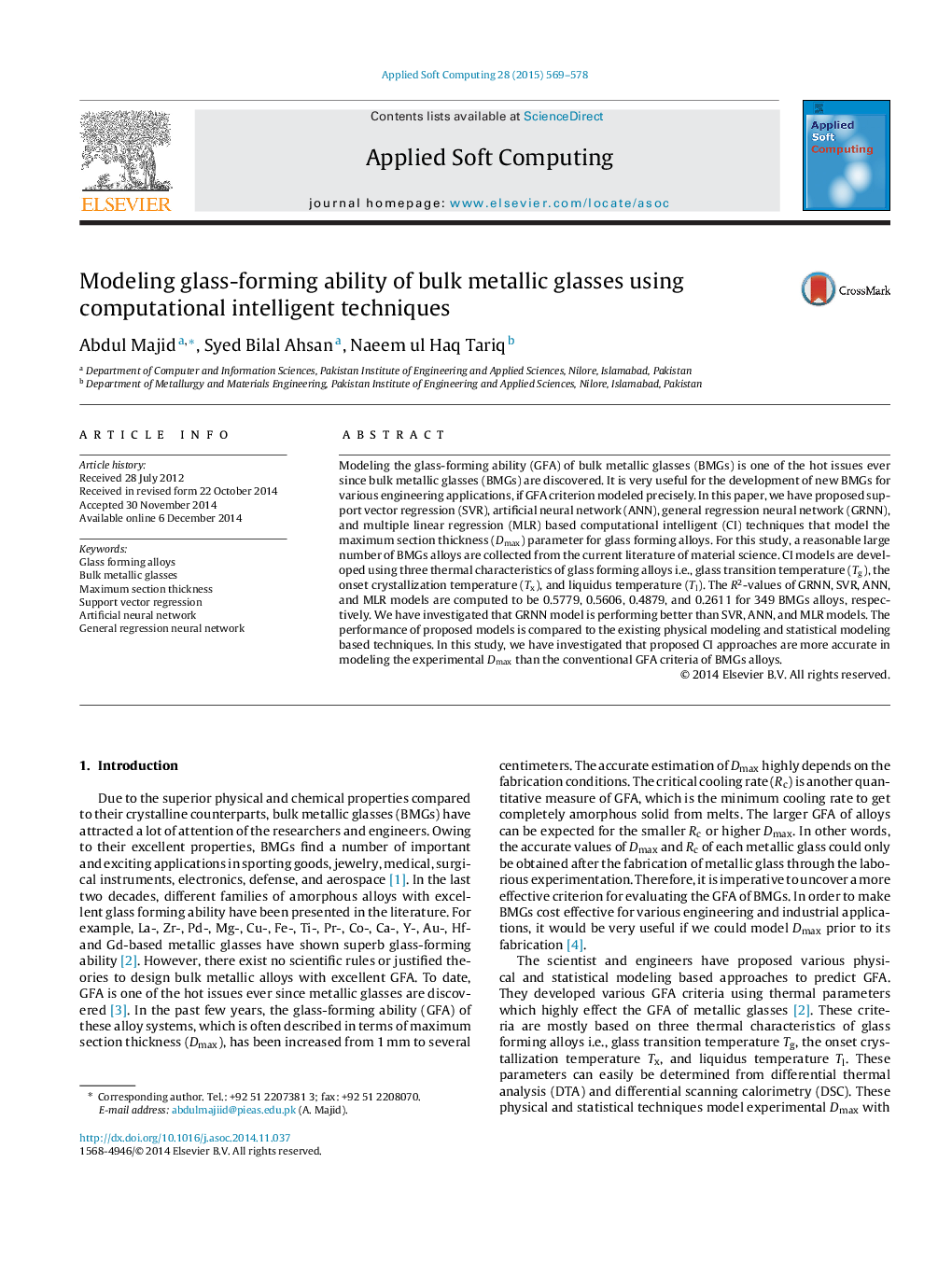| کد مقاله | کد نشریه | سال انتشار | مقاله انگلیسی | نسخه تمام متن |
|---|---|---|---|---|
| 6905591 | 862818 | 2015 | 10 صفحه PDF | دانلود رایگان |
عنوان انگلیسی مقاله ISI
Modeling glass-forming ability of bulk metallic glasses using computational intelligent techniques
ترجمه فارسی عنوان
مدل سازی توانایی شیشه سازی بزرگ عینک های فلزی با استفاده از تکنیک های هوشمند محاسباتی
دانلود مقاله + سفارش ترجمه
دانلود مقاله ISI انگلیسی
رایگان برای ایرانیان
کلمات کلیدی
آلیاژهای تشکیل شیشه ای، عینک های فلزی بزرگ، حداکثر ضخامت بخش، رگرسیون بردار پشتیبانی، شبکه های عصبی مصنوعی، شبکه عصبی رگرسیون عمومی،
موضوعات مرتبط
مهندسی و علوم پایه
مهندسی کامپیوتر
نرم افزارهای علوم کامپیوتر
چکیده انگلیسی
Modeling the glass-forming ability (GFA) of bulk metallic glasses (BMGs) is one of the hot issues ever since bulk metallic glasses (BMGs) are discovered. It is very useful for the development of new BMGs for various engineering applications, if GFA criterion modeled precisely. In this paper, we have proposed support vector regression (SVR), artificial neural network (ANN), general regression neural network (GRNN), and multiple linear regression (MLR) based computational intelligent (CI) techniques that model the maximum section thickness (Dmax) parameter for glass forming alloys. For this study, a reasonable large number of BMGs alloys are collected from the current literature of material science. CI models are developed using three thermal characteristics of glass forming alloys i.e., glass transition temperature (Tg), the onset crystallization temperature (Tx), and liquidus temperature (Tl). The R2-values of GRNN, SVR, ANN, and MLR models are computed to be 0.5779, 0.5606, 0.4879, and 0.2611 for 349 BMGs alloys, respectively. We have investigated that GRNN model is performing better than SVR, ANN, and MLR models. The performance of proposed models is compared to the existing physical modeling and statistical modeling based techniques. In this study, we have investigated that proposed CI approaches are more accurate in modeling the experimental Dmax than the conventional GFA criteria of BMGs alloys.
ناشر
Database: Elsevier - ScienceDirect (ساینس دایرکت)
Journal: Applied Soft Computing - Volume 28, March 2015, Pages 569-578
Journal: Applied Soft Computing - Volume 28, March 2015, Pages 569-578
نویسندگان
Abdul Majid, Syed Bilal Ahsan, Naeem ul Haq Tariq,
